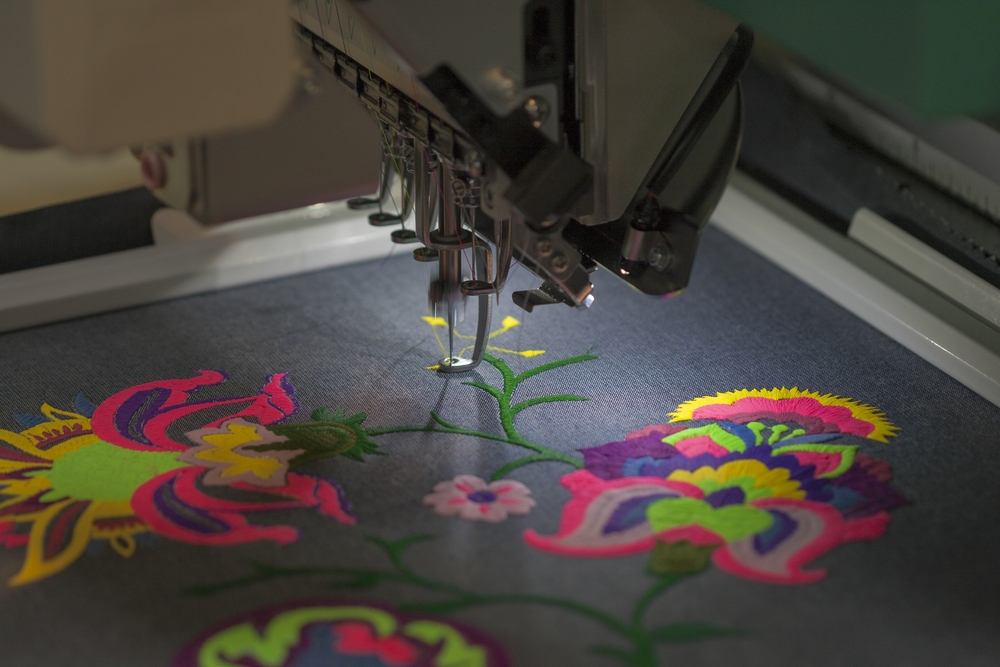Grasping the Needlework Digitizing Process: Your Ultimate Overview
Needlework digitizing is a careful craft that calls for precision and know-how to convert intricate layouts right into digital styles for device embroidery. As artisans get started on this trip to grasp the embroidery digitizing process, a comprehensive understanding of the essentials sets the structure for quality.

Comprehending Embroidery Digitizing Essentials
Needlework digitizing essentials develop the structure whereupon detailed layouts are converted into machine-readable styles for specific sewing. This first action in the embroidery digitizing process is important for making sure that the last embroidered product is a faithful representation of the initial layout. Recognizing needlework digitizing fundamentals involves grasping key concepts such as stitch kinds, sew direction, density, padding, and draw payment.
Stitch kinds play an essential function in identifying the visual and textural end result of the stitched style. By selecting the appropriate stitch kind, whether it be satin, fill, or running stitch, digitizers can accomplish the desired result and improve the overall quality of the needlework. Furthermore, stitch instructions affects the flow and measurement of the style, while density establishes the spacing and insurance coverage of the stitches.
Additionally, underlay stitching offers stability to the style by securing the textile and stopping distortion during the needlework process. Draw payment is an additional necessary consideration to neutralize the natural tendency of material to contract when sewn. Mastering these needlework digitizing basics is essential for creating professional-quality stitched items.
Selecting the Right Digitizing Software Program
Selecting the suitable digitizing software program is a vital choice that considerably affects the performance and quality of the embroidery digitizing procedure. Digitizing for Embroidery. When picking the best digitizing software application, it is important to think about aspects such as the complexity of designs you prepare to produce, the user-friendliness of the software program, the degree of customer support used, and the compatibility with your needlework equipment
There are various digitizing software application alternatives available out there, varying from basic programs for novices to innovative software application for expert digitizers. Some preferred choices include Wilcom EmbroideryStudio, Hatch Embroidery Software, and PulseID. These software offer a variety of devices and functions to assist you produce complex designs effortlessly.
Prior to choosing, it is suggested to discover the various software application choices with complimentary tests or demonstrations to identify which one finest fits your look at more info requirements. In addition, checking out testimonials and seeking recommendations from skilled digitizers can provide beneficial understandings into the toughness and weak points of each software application package (Digitizing for Embroidery). By meticulously examining your demands and contrasting the features of various digitizing software program, you can important link make an informed selection that boosts your embroidery digitizing operations
Digitizing Devices and Techniques

Optimizing Style Settings for Needlework
Understanding the my blog ins and outs of design settings is basic in accomplishing optimal outcomes in the embroidery digitizing procedure, building upon the structure laid by understanding digitizing devices and techniques. When maximizing style settings for needlework, it is necessary to think about factors such as stitch type, density, rug, draw payment, and enrollment. Enrollment settings straighten different elements of the layout precisely, preserving total style stability.

Troubleshooting Common Digitizing Issues
When experiencing common digitizing issues throughout the needlework process, it is necessary to recognize the origin and apply reliable options quickly. One common issue is stitch thickness issues, where stitches might be too thick, causing the material to pucker, or too sporadic, leading to gaps in the style. Readjusting the stitch density setups in the digitizing software can assist settle this issue.
Another regular obstacle is thread breaks during the needlework process. This can happen as a result of numerous reasons such as wrong stress setups, plain needles, or using low-quality thread. Making certain correct upkeep of the needlework device, including routine needle modifications and stress modifications, can lessen the event of string breaks.
Moreover, design registration errors can result in misaligned elements within the embroidery design. Inspecting the style placement in the digitizing software program and making necessary adjustments before sewing can assist in preventing this concern. By addressing these common digitizing problems quickly and successfully, you can make certain a smoother needlework procedure and top quality ended up items.
Conclusion
In conclusion, mastering the needlework digitizing procedure calls for a strong understanding of the essentials, the appropriate choice of software, and expertise of tools and strategies. Maximizing layout setups and troubleshooting common digitizing issues are critical action in ensuring premium embroidery results. By following these steps faithfully, one can attain accuracy and performance in the digitizing process.